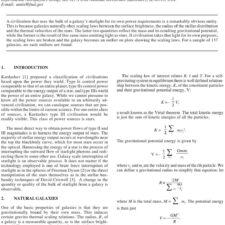The Effects of Probe Dynamics on Galactic Exploration Timescales
£5.00
D. H. Forgan; S. Papadogiannakis; T. Kitching (2013), JBIS, 66, 171-178
Refcode: 2013.66.171
Abstract:
The travel time required for one civilisation to explore the Milky Way using probes is a crucial component of Fermi’s Paradox. Previous attempts to estimate this travel time have assumed that the probe’s motion is simple, moving at a constant maximum velocity, with powered flight producing the necessary change in velocity required at each star to complete its chosen trajectory. This approach ignores lessons learned from interplanetary exploration, where orbital slingshot maneouvres can provide significant velocity boosts at little to no fuel cost. It is plausible that any attempt to explore the Galaxy would utilise such economising techniques, despite there being an upper limit to these velocity boosts, related to the escape velocity of the object being used to provide the slingshot. In order to investigate the effects of these techniques, we present multiple realisations of single probes exploring a small patch of the Milky Way. We investigate 3 separate scenarios, studying the slingshot effect on trajectories defined by simple heuristics. These scenarios are: i) standard powered flight to the nearest unvisited star without using slingshot techniques; ii) flight to the nearest unvisited star using slingshot techniques, and iii) flight to the next unvisited star which provides the maximal velocity boost under a slingshot trajectory. We find that adding slingshot velocity boosts can decrease the travel time by up to two orders of magnitude over simple powered flight. In the third case, selecting a route which maximises velocity boosts also reduces the travel time relative to powered flight, but by a much reduced factor. From these simulations, we suggest that adding realistic probe trajectories tends to strengthen Fermi’s Paradox.





